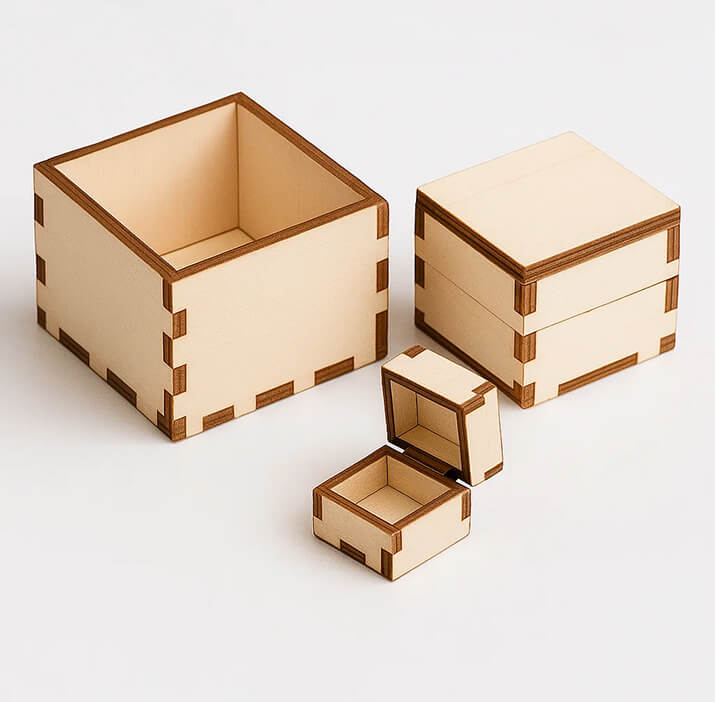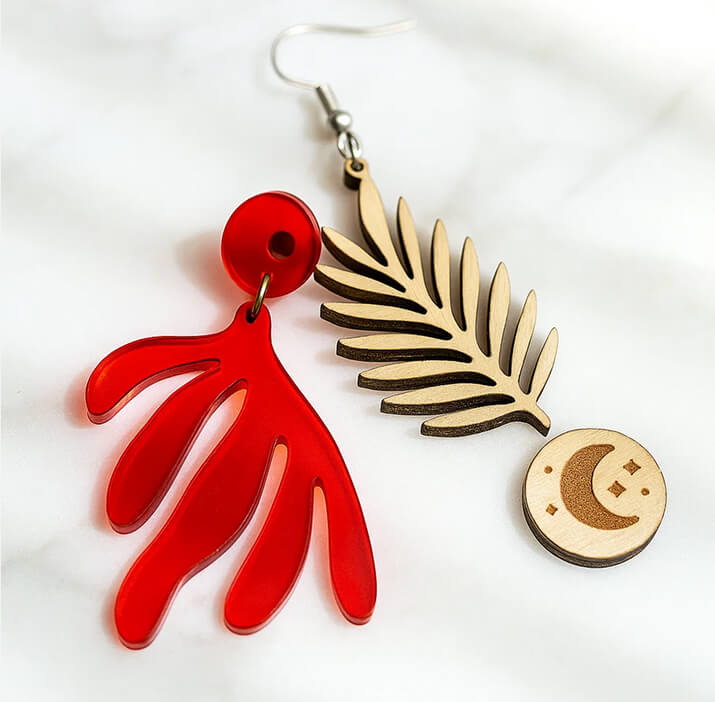![[Laser cut and engrave] Whale-shaped LED night light with colorful illumination](https://image-res.xtool.com/resource/xtool/community/attachment/xtool-community/35b78fa4-e7a0-402a-a7d4-711a1396d15b?x-oss-process=image/resize,w_1200,h_900,limit_0/interlace,1/format,webp/auto-orient,1)
Whale acrylic lamp

Information
Explore the perfect combination of geometry and minimalism! This whale lamp is crafted from laser-cut colored MDF (medium-density fiberboard), double-sided frosted acrylic sheets and RGB light strips. Show its dynamic beauty through changes in light and shadow.





Instruction
Step1: Laser cutting
Finish cutting the required components.
Step2: Assemble 1
First, sort out the components in the following shapes and set them aside.Insert the bolts into the slots to connect the three inner side panels.
Step3: Assemble 2
Then align the dark blue outer side panel with the inner components, fix them with clips, pay attention to aligning the edges, and then use glue to bond and fix each layer.
Step4: Assemble 3
Remove the protective film on the acrylic board. Align the edge of the acrylic board with the edge of the light strip groove on the inner side of the wooden board and then fix them. Use glue to bond them together. (Tip: Before fixing the acrylic board with glue, you can try installing the light strip first to prevent the width of the subsequent light strip groove from being too narrow and the light strip from being unable to be inserted.)
You can insert the foot support plate for positioning first to align the acrylic board with the outer wooden board.
Attention must be paid! Make sure that the glue doesn't spill over to the outside of the acrylic board, otherwise it will seriously affect the appearance effect.
Step5: Assemble 4
Install the outer back panel and the inner components of the tail fin.
Step6: Assemble 5
Start installing the light strip from the head. Align the first 4 LEDs with the grooves on the acrylic board, and then carefully embed the LED light strip into the light strip groove. The excess light strip can be folded and stored in the reserved internal space. Don't push down or fold the light strip too hard, otherwise the circuit will be broken.
Step7: Assemble 6
Cover the last inner side panel. After alignment, use glue to fasten it. Try to use clips to fix it first before using glue to prevent misalignment. Meanwhile, pay attention to whether the light strip is installed flat to avoid crushing the light strip.
Step8: Assemble 7
Install the outer panels of the body and the tail fin.
Step9: Assemble 8
Finally, insert the foot support plate into the notch to complete the assembly. (Acrylic is rather brittle, so be careful during installation.) If it's a bit loose, you can use vector glue to fix it.
Step10: Complete
Connect to the controller. After powering on, you can use the infrared remote control to switch the light effects.





